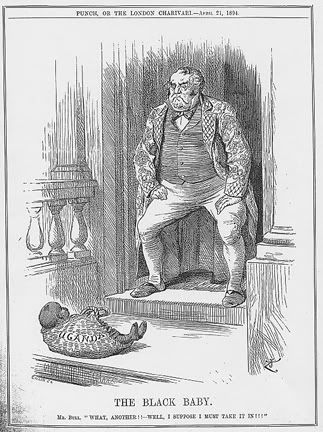(
This post will examine and address the integration of technology at St. Pancake High School, in the light of the National Education Technology Standards for Teachers (NETS-T).
By the time I'd started pre-pre-student teaching at St. Pancake High, I had only visited one school- an affluent private school for girls- that had any significant infusion of technology within the classroom. Obviously, the parents, alumni, administration and staff of The Plaid Skirt School for Girls (another pseudonym) were enthusiastically onboard with technology. Suffice to say, computer labs and laptops were abundant. Unfortunately I didn't get much of a chance to observe how they were integrated into the academic life of the school.
The other schools I'd observed were an urban/suburban school with absolutely no apparent technological integration in the classroom, save a VCR and a television for video viewing, and an inner-city school with at least a smattering of desktop computers scattered throughout the school, and one (small) dedicated lab.
Therefore you can imagine my shock when on my first day at St. Pancake, where I observed a class on the Jazz-Age, interactively taught to them by video-conference by a professor at a nearby music conservatory. WOW. Did I mention the interactivity? Despite some of the technical glitches the conservatory professor was leading a regular class- she was asking "guided inquiry" types of questions trying to provoke the students to apply what they'd been taught about the era, and fielded questions with a depth commensurate with her academic pedigree.
All of the classrooms at St. Pancake had at least one desktop computer per teacher, a Smartboard and laptops available for class projects, of which I only witnessed the class conduct two projects.
The laptops were kept in a rolling, locked cabinet in the hallway. While I am not sure how computer-time was allotted to the teachers, I assume there must have been a sign-up sheet or something to allow for the deconfliction of scheduling problems.
The first assignment I witnessed was a research project. The students were tasked with finding information in order to augment a multi-class inter-disciplinary project combining theological and historical information. I admit I was not paying too much attention at how the teacher managed the experience; however I did help a one particular student conduct his research by asking him a series of questions on how to re-frame his search criteria after his initial queries were unsuccessful in unearthing information relevant to his task.
The second project involved the students working through an interactive interface on a history website about the Industrial Revolution. The students were given a handout, and were tasked with navigating through the multimedia interface in small groups, to discover the meaning of certain terms and historical facts. The page itself "simulated" a descent into a mine, and was perhaps very instructive in that the students learned (through coupling information with imagery) about the limits and capabilities of Industrial Revolution-era technology in raw material extraction. The teacher's involvement was "minimal" during the class-period- allowing the students to go about the task with light guidance- but all of his pedagogical work was mostly in his pre-evaluation of the website and the development of the handout to guide the students through the project. The handout of course, was the assessment tool through which he could gauge the efficacy of the how the website provided information relevant to the curriculum he was tasked with teaching.
For me personally, the availability of technology in the classroom was indispensable. I created a series of power-point presentations which I utilized during lessons. On the negative side, I believe I may have become too dependent on their usage, but on the positive side, I've found that coupling information with imagery was a highly successful way of getting a complex point across (however, I don't have any "control group" information to compare it to). For example, during a lesson on Imperialism, I had the students analyze and assess a Kipling poem, and two cartoons from Punch contemporary to the era. Though I have no way of evaluating this statement, I believe that had they not had a series of visuals and snippets of information flashing away on the Smartboard, they may not have internalized as much information as quickly if I had been droning away without it. During the seatwork which I integrated into the lesson, they certainly demonstrated they had processed what I'd presented.
Though scant, I believe "my" students and I had a positive experience with integrating technology and curriculum. I dread having to go out into the real world and running the risk of not being able to work at a school with a minimal amount of technology in the classroom.

I used the cartoon above- from Punch, 21 April, 1894, to encourage the students at St. Pancake to look for evidence of paternalism evident in the popular mind of Britain, in its acquisition of new colonies.

No comments:
Post a Comment